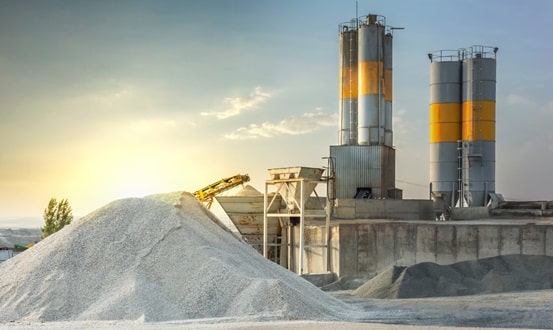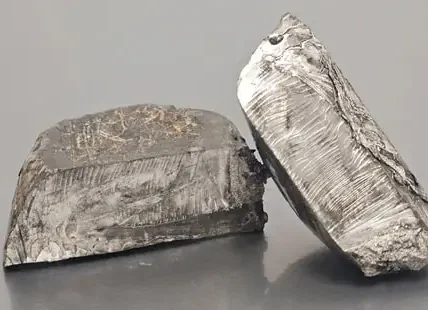Being the backbone of the construction industry cement plays a very important role in the development of infrastructure spread across the globe. With the cities mushrooming and urbanization fast-tracking across nations, the demand for cement is rising at rising trend lines making it one of the most essential commodities spread across the globe. In this article, consider the top 10 largest cement producers, uncovering giants with great feathers in the world of construction.
1. China – 2,100 MT:
China produces cement of 2,100 million MT every year, topping the world. China is also number 1 in Mica Production. Growing urbanization and ambitious infrastructure projects spit out large quantities of cement guarantee most dominance in the market. Construction works in China are huge and important for purposes of growth. Millions of Chinese move from rural to urban areas, and the demand for housing, commercial space, and urban infrastructure remains insatiable. Population expansion pushes up cement consumption, a building need. China’s huge infrastructure projects—highways, bridges, and public facilities—increase cement production. China’s ambition to make new cities and renewal of old ones illustrates how it has made the country have a lot on its construction plate. The high cement production pushes local construction and makes China to be a worldwide supplier.
2. India – 370 MT:
India is second after China cement manufacturing with 370 million metric tons per year. This might be put into numbers as India stands with prominence on the global scale of the cement industry. Population growth and urbanization are the reasons for this incredible productivity in the Indian building industry. India is in need of housing, infrastructural, and commercial space for a burgeoning population. Construction assumes significance for India’s economy in the country’s demographics and urbanization. The key cement provider is the Indian dealer due to ballooning cities and rural to urban migration. India’s progress aspirations are mirrored in its construction boom with roadways and residential complexes being the lifeline to progress.
3. Vietnam – 120 MT:
Vietnam is a 120 million metric tons ranked three in the world as a developing producer of cement. Vietnam becomes hosts to the world’s largest global producers of cement due to efforts in infrastructure and building. Vietnam globally is a player of cement through its infrastructure push. The government wants to boost up the urbanization, transportation connectivity. With strong structure build-up in Vietnam, vast cement output caters to local demand and makes it a worldwide participant. Cement manufacturing is increasing in the country with the booming construction industry of Vietnam. Increase in economic growth, population, and urbanization are some of the driving factors causing an increase in cement consumption in the Vietnamese context. Throughout industrial and residential investments of the country, the entire has resulted more with Vietnam’s cement production.
4. United States – 95 MT:
US cement production holds fourth in the world with 95 million metric tons per year, a healthy indicator of the building industry. Development demand for roads, bridges, and homes in the U.S. therefore boosts greatly the cement global market share. One of the major places that feel the impact of the US’ construction sector is on the cities and suburbs. A number of national initiatives indicate the government’s commitment to infrastructure developments. From roads and bridges to housing, there is a cement demand that is so dire. The usage of cement in the United States is demanded by highways, bridges as well as residential promotions. Relatively, this is pushed by maintaining and updating infrastructures’ demand as well as developing urban center populations’ growth.
5. Turkey – 85 MT:
This has further enhanced its impact as Turkey produces annually 85 million metric tons of cement. Located between Europe and Asia with a blooming construction industry, Turkey is a concrete player globally. Turkey is strategically placed between continents, considering this case, and has grown economically through improved trade and connectivity. The cement industry position in Turkey allows efficient distribution and supply to Europe and Asia. Through transit status, the nation’s cement supply chain function improves. Turkish construction booms following massive urbanization, population growth, and a rock-steady economy. Infrastructure and real estate developments raise cement consumption associated with this building binge. Turkey tops the world in cement production by catering to and exceeding this demand.
6. Brazil – 65 MT:
Brazil – the South American giant, with between 65 million metric tons of cement produced annually ranked sixth globally. Brazil is rising as a result of infrastructure growth and building sector expansion influencing the global cement industry. Infrastructure has underpinned Brazil’s cement production success. This country has invested much for transport, public facilities, and communications. These initiatives fit the local demands while positioning Brazil among the global cement supply chain leaders as construction industry changes. Added to this, the building industry increases Brazil’s cement market dominance. The consumption of cement in Brazil is determined with a minority growing population, urbanization, and a booming economy. Proper production of enough cement is done in Brazil since there is the boom of residential, commercial, and industrial construction works.
7. Indonesia – 64 MT:
Indonesia produces 64 million metric tons of cement every year, which is why it ranks the tenth producer in the world on that manufacturing segment. Its fast-growing construction sector within the country has been supporting its supremacy on the domestic market of cement. Infrastructure and the growth of population have made Indonesia a strong manufacturer of cement. Using constraints of its archipelago, this has enabled it as a global cement player. Its approach is strategic focusing on infrastructure. Cement needs throughout the nation are being boosted by large projects such as transportation networks and public facilities. This promise meets the local infrastructure needs and in unison, promotes Indonesia as a global supplier.
8. Russia – 62 MT:
Russia manufactures 62 million metrics tonnes of cement every year, tenth globally. The Russian market for cement is influenced by the country owing to her vast land and lots of diverse development initiatives. Some of the developments in such respect in the country include transportation as well as urban infrastructure. The vast landmass of Russia’s Eurasia supports various development initiatives increasing cement production. The country features as the only one globally whose apparent vast infrastructure projects have dominated the cement sector. Russia commitment to change is evident in modernization to transportation networks and expanding metropolises.
9. Iran – 62 million to2ns:
Iran produces 62 million metric tons of cement on yearly basis, seventh joint with Russia. The booming construction has always been at the helm of Iran’s huge annual cement output. The booming construction is driving the country due to its urbanization and population increase. The worldwide supply chain of cement, therefore, greatly benefits from the mobilization of cement through Iran’s growing and modernizing cities. Iranian development directly links with population growth, and as populations grow, residential, infrastructural, and commercial sectors are born developing cement demand. Iran, having the ability to match all these demands, is a critical cement supplier for both local and global growth.
10. Saudi Arabia – 54 MT:
Saudi Arabia is the leading manufacturer of cement with 54 million metric tons yearly. The country, through its large infrastructure projects, is a player in the cement market. Saudi Arabia determination is visible through NEOM and Vision 2030. Saudi Arabia is a world producer of cement having an output of 54 million metric tons to show for it. Its unique position in the Middle East and staunch involvement in infrastructure projects peg down Saudi Arabia as key players in the cement supply chain. Cement helps Saudi Arabia take strides towards its ambitious development plans showing dedication.
Conclusion:
The top 10 largest cement producers in the world wield immense influence in shaping the global construction landscape. From the collosal production volumes of China and India to rising stars like Vietnam, these nations play a pivotal role in meeting the growing demand for cement. With urbanization and the need for infrastructure that is projected to keep increasing over the years, these cement giants will continue shaping the skyline of cities across the world and fueling economic growth as insatiable demand for construction materials continues.
Also see:
- Largest Producer Of Silver In The World
- Largest Producer Of Manganese In The World
- Largest Producer Of Rubber In The World

Brandon is the cheif editor and writer at WorldUnfolds.com. With a passion for storytelling and a keen editorial eye, he crafts engaging content that captivates and enlightens readers worldwide.















